#cylisticus convexus
Explore tagged Tumblr posts
Text

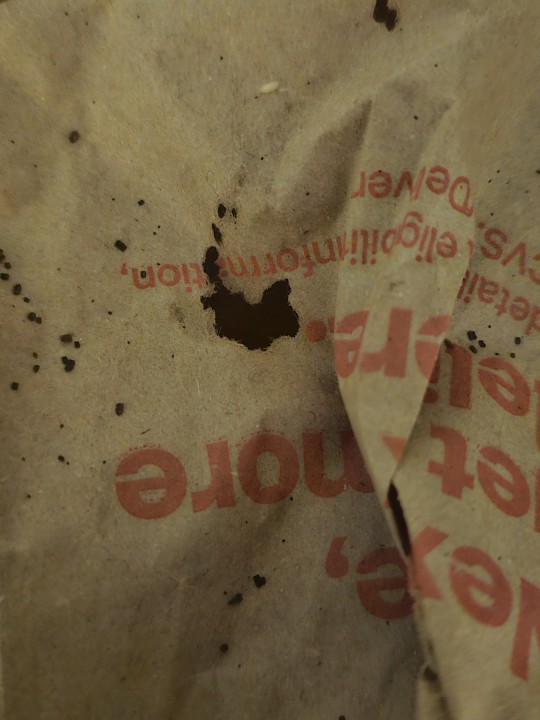
Experiment to see if the isopods will eat the paper bags I get meds in. So far the answer is yes
48 notes
·
View notes
Text
Cylisticus convexus


0 notes
Note
Sorry if this is a dumb question, but I'm looking to start keeping isopods and was wondering if any make particularly good starter pets or if they're all fairly equal. Thanks for any info you can give!
my usual answer is that anything other than the very expensive European giant Porcellio and Asian armadillids (those “Cubaris” and “Merulanella”) is perfectly fine for a beginner. you can never go wrong with the common garden species (Porcellio scaber, laevis, spinicornis; Porcellionides pruinosus/floria; Armadillidium vulgare, nasatum; Oniscus asellus; Trachelipus rathkii; Cylisticus convexus) and any of their morphs. but even some of the more colorful localized species like A. maculatum or the cheaper not-really-Cubaris like ‘Panda King’ and ‘Pak Chong’ are quite hardy and prolific and should do well for you.
79 notes
·
View notes
Text

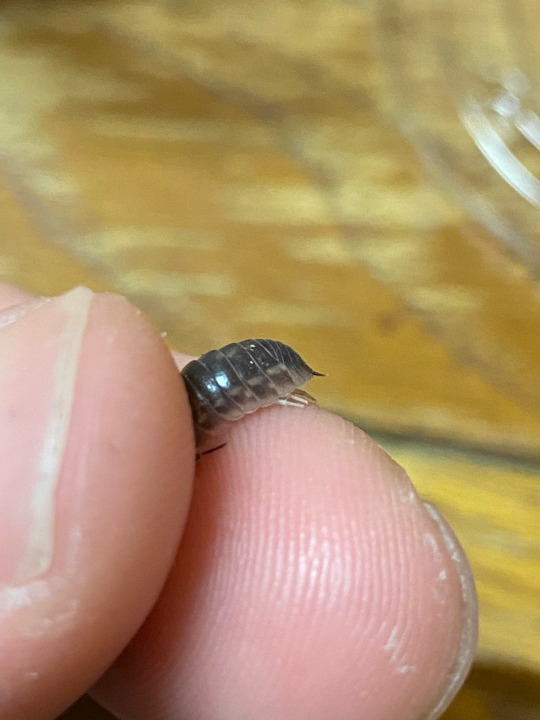

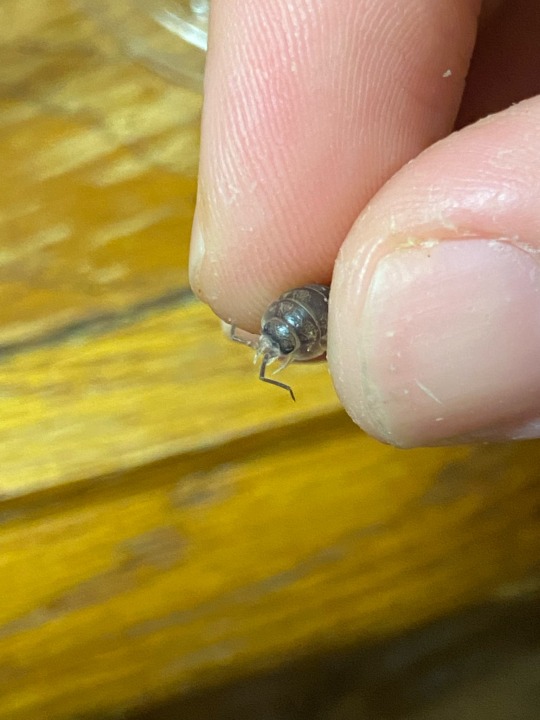
Heyo! Hoping you don’t mind ID’ing these guys I found in central NC. Above pics are all of the same individual. I’m thinking T. rathkii given your quick trick for ID’ing by gill patch pair numbers, but I truly have no idea.

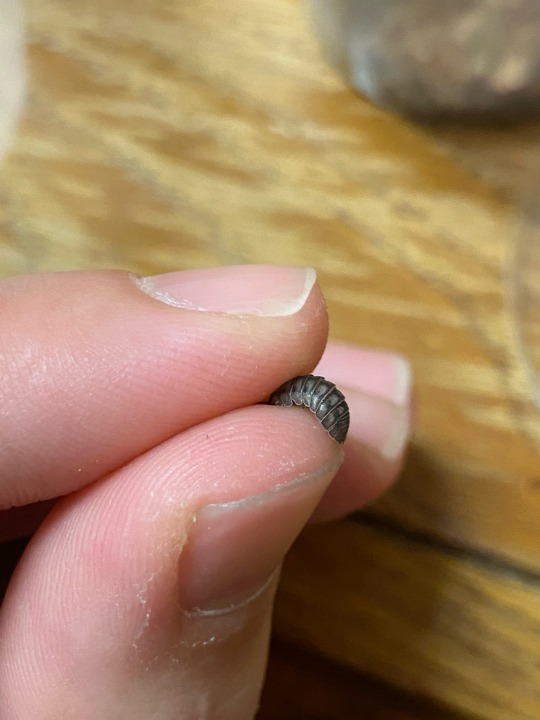
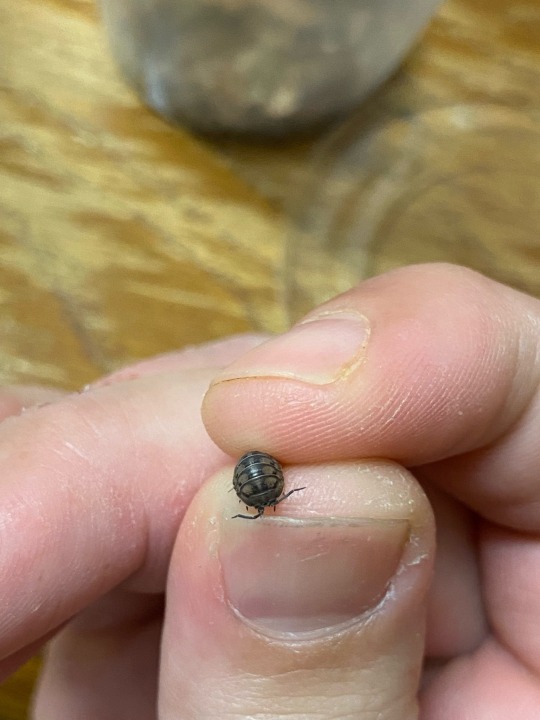

Another individual. Gill patch patch number appears to be…zero? One?


This last individual also appears to have either zero or one pair. Tumblr limits to 10 pics, I can send underside shots if ya need ‘em. Thanks for your time!
first animal is Cylisticus convexus, the only other isopod found in the region that has five pairs of lung patches. unlike Trachelipus, these can roll into balls.
the other two are Armadillidium nasatum, which should have two pairs of lungs.
26 notes
·
View notes
Text
@twigby-art perhaps you can spot a problem I've missed here
the colony is cylisticus convexus


the container is about 10cm high, with 5cm of substrate depth. the third line of ventilation on the right was just added now, so they haven't had that until today. the vents on the sides are taped up as well (had some escape attempts)
potting soil substrate (I'm unsure of how organic it is, but it hasn't caused issue with my other two colonies as of yet)
I've got springtails in there as well
I worry perhaps it's too moist, I only try to wet the moss but it seems quite damp throughout. the leaf litter has mostly rotted as well from the moisture.
at first I found one body, I figured I may have accidentally crushed one putting the cork bark back in after checking on them. and then I had left them completely unchecked for about a week (perhaps a bit more?), and now there's 4 more dead.
4 notes
·
View notes
Text
I was always a staunch pillbug for Armadillidium, sowbug for Porcellio/Oniscus/Trachelipus kid while growing up, and snobbishly looked down on “roly poly” (still do).
but then I found Cylisticus convexus, which is both long and flattish but can curl into a ball! neither sowbug nor pillbug! O conundrum! O missing link*!
at that point I’d already started just calling them all “isopods,” though.

* cylisticids evolved conglobation separately from armadillidiids; they aren’t really a “missing link.” in fact, land isopods probably evolved a “pillbug” form at least six or seven times independently, it works pretty well!
Okay because I'm genuinely curious, what does everybody call this little guy

Put where you're from in the tags if you want! (general regions only obviously pls don't doxx yourselves)
10K notes
·
View notes
Text
Update to last night's post. Did some more research on the unidentified isopod and the reddit post was actually correct on their ID (Google was just giving me bad results) , they are Cylisticus convexus. Again the orange uropods does not appear to be something entirely typical with this species.
Odd how both of these very different species have orange uropods, wonder if it's something in the environment causing it like high iron? Or all the pine needles?
Same pics again cuz why not

Both the ones I cought yesterday appear to be doing well. The P. Floria was out chilling on some bark I put in there.
Planning to set up some isopod potato traps later today in that area to see what all more can be found, hopefully some more P. Floria so I can set up a viable colony of them.
#ads_isopods#cylisticus convexus#porcellionidae floria#c. convexus#p. floria#isopod#isopod keeping#bug#bugs#bugblr#insectblr
12 notes
·
View notes
Text
Only today did I find out that my local pet store has isopods (and springtails),
So here's the start of the clean up culture! The C-squad! Curly isopods

They're all settled in their new home now :3
#isopods#crustacean#Crustaceans#insects#bioactive#cylisticus convexus#curly isopods#c. convexus#insect#tagging insect just in case even tho they crust bois#Arthropods#invertibrates#inverts#invert#exoskeleton#bug#bugs#rolly polly
0 notes
Photo







The isopod varieties I’ve acquired recently and haven’t posted yet!
Top Row: Porcellio scaber ‘Dalmation’, Little Sea Roly Poly (Cubaris murina) Second Row: Porcellio scaber, Cylisticus convexus Third Row: Dwarf Striped Isopod, Porcellio scaber ‘Calico’ Bottom: Orange cultivar Powder Blue (Porcellionides priunosus ‘Orange’)
The C. convexus and Orange Powder Blues were acquired through a trade; I also got Atlantoscia floridana, the Florida fast isopod. They are impossible to photograph, though, they’re so fast. The C. convexus aren’t slowpokes either.
The Calico Rough Isopods and the Dwarf Striped Isopods were purchased online from Bugs in Cyberspace.
The Little Sea Roly Polies, Rough Isopods, and Dalmation Rough Isopods came from vendors at the Portland Reptile Expo. Unfortunately the Rough Isopods were sold to me as Flowery Blues. Ah well, at least I didn’t have any wild morph Roughs yet.
#bugblr#isopod#roly poly#sow bug#potato bug#sowbug#woodlice#woodlouse#pill bug#my photos#my pets#cylisticus convexus#calico isopod#calico rough isopod#porcellio scaber#my posts#porcellionides priunosus#orange powder blue#dwarf striped isopod#florida fast isopod#fast isopod#atlantoscia floridana#cubaris murina#porcellionides priunosus orange#rough isopod
22 notes
·
View notes
Text



Curly Woodlouse, Cylisticus convexus
10 notes
·
View notes
Text
Here’s my full list as of now :•)
Armadillidium vulgare “punta cana “ •
Armadillidium vulgare “gem mix”•
Armadillidium vulgare “magic potion japan” •
Armadillidium vulgare “magic potion usa “ •
Armadillidium vulgare “t+ albino” •
Armadillidium vulgare “t- albino” •
Armadillidium vulgare “wild type” •
Armadillidium vulgare “orange vigor”•
Armadillidium vulgare “mega mix”
Armadillidium maculatum “zebra” •
Armadillidium maculatum “chocolate zebra”
Armadillidium maculatum “yellow zebra”
Armadillidium nasatum “peach”
Armadillidium nasatum “Pearl”
Armadillidium nasatum “wild type” •
Armadillidium klugii “montenegro clown” •
Armadillidium klugii “pudding”•
Armadillidium klugii “Dubrovnik”
Armadillidium peraccae •
Armadillidium depressum
Armadillidium granulatum •
Armadillidium gestroi •
Armadillidium frontitostre “Croatian giant” •
Armadillidium werneri “orange”
Armadillidium versicolor “ceska”•
Armadillidium versicolor “polska”
Armadillidium espanyoli sp “marbleized”•
Armadillo officinalis “Sicily” •
Armadillo officinalis “orange crush”•
Armadillo officinalis “Israel”
Armadillo officionalis “unknown locale”
Porcellio scaber “mixed” •
Porcellio scaber “lava”
Porcellio scaber “red callico”•
Porcellio scaber “orange koi”•
Porcellio scaber “Dalmatian”•
Porcellio dilataus “giant canyon” •
Porcellio laevis “dairy cow” •
Porcellio laevis “white” •
Porcellio laevis “Caramel” •
Porcellio laevis “milk back” •
Porcellio laevis “orange” •
Porcellio laevis “piebald” •
Porcellio laevis “California mix”•
Porcellio laevis “mega mix”•
Porcellio ornatus “yellow dot”•
Porcellio bolivari •
Porcellio flavomarginatus•
Porcellio sevilla •
Porcellio werneri
Porcellio expansus “orange”
Porcellionides pruinosus “powder orange” •
Porcellionides pruinosus “powder blue” •
Porcellionides pruinosus “Oreo crumble” •
Porcellionides pruinosus “white out”•
Porcellionides pruinosus “orange cream”•
Cubaris sp. “Panda King” •
Cubaris murina “papaya” •
Cubaris murina “glacier”•
Cubaris murina •
Cubaris Borneo •
Cubaris sp. “rubber ducky “•
Cubaris sp “blonde ducky”•
Cubaris sp. amber
Cubaris sp “Pak Chong”•
Nesodillo arcangeli “shiro utsuri”•
Cubaris sp. “silver ghost”•
Cubaris sp. “Jupiter”
Cubaris sp. “red tiger”•
Cylisticus convexus •
Cylisticus convexus “Ukraine pied”•
Venezillo parvus “Dalmatian”•
And then my projects are orange magic potions (both varieties), weird white p. laevis, and definitely some other stuff I’m forgetting
4 notes
·
View notes
Text
The springtail situation in my C convexus box
#just mats of them. idk what species they are im not wise to springtails#isopoda#cylisticus convexus#living pets
43 notes
·
View notes
Text




Some of my Cylisticus convexus.
0 notes
Photo

New roommates in the Chondrodesmus riparius's terrarium. 10 plus little Cylisticus convexus. Little woodlouses🤗 #cylisticusconvexus #cylisticus #isopoda #chondrodesmus #chondrodesmusriparius #diplopoda #polydesmida #insect
#chondrodesmusriparius#cylisticusconvexus#insect#polydesmida#isopoda#chondrodesmus#diplopoda#cylisticus
0 notes
Text


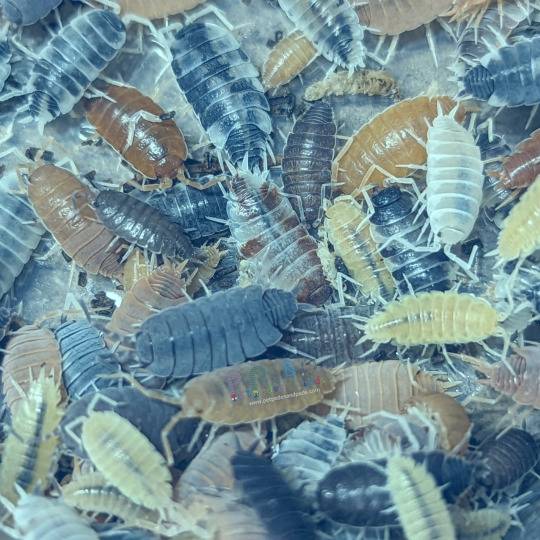
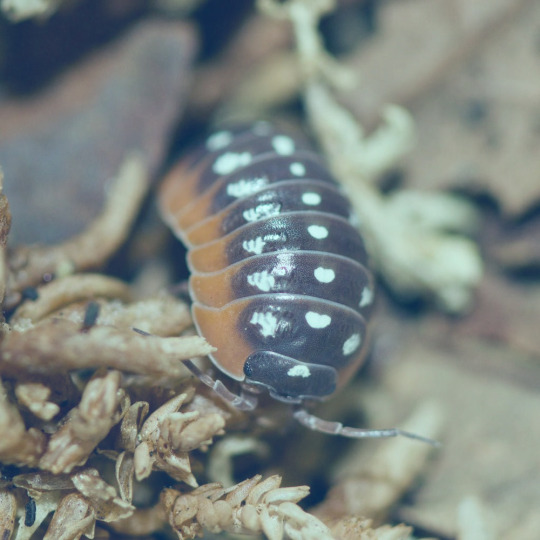

𝕊𝕠𝕖𝕤𝕛𝕖 || 𝕒𝕟𝕪 𝕡𝕣𝕟𝕤 || 𝕚𝕤𝕠 𝕖𝕟𝕥𝕙𝕦𝕤𝕚𝕒𝕤𝕥
𝙲𝚞𝚛𝚛𝚎𝚗𝚝𝚕𝚢 𝚒𝚗 𝚙𝚘𝚜𝚜𝚎𝚜𝚜𝚒𝚘𝚗 𝚘𝚏:
Porcellio Pruinosus (blue/orange/crumbling population of oreo crumbles [pun intended])
Armadillidium Klugii (montenegro)
Cylisticus Convexus (ukrainian pied)

5 notes
·
View notes
Text



Looks like big mama Cylisticus convexus had her babies, they are so cute!
0 notes